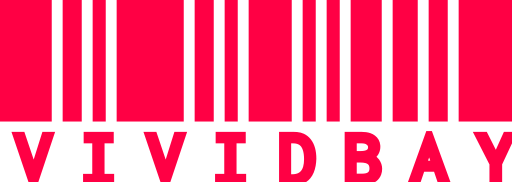The iPad has come a long way. What was once a tablet meant for media consumption is now packed with powerful chips like the M2 and M4, support for external displays, and features that blur the line between tablet and laptop. This naturally raises the question:
Can you use an iPad to develop apps for iOS, Android, and Windows?
The short answer? Yes, but with limitations.
The iPad’s Hardware is Impressive, But iPadOS Holds It Back
From a hardware standpoint, the iPad is more than capable. It offers excellent performance, especially in the Pro models. However, the software, specifically iPadOS, isn’t quite up to speed for professional software development.
If you’re a developer, you’ll quickly notice the major gap: iPadOS doesn’t support most mainstream development tools.
- No Xcode (required for building iOS and macOS apps)
- No Android Studio
- No Visual Studio Code
Without these tools, full-scale mobile and desktop app development is simply out of reach on the iPad.
Workarounds: Remote Development Through Another Machine
One workaround many developers use is remote development. By connecting your iPad to a Mac or Windows computer using remote desktop tools like:
- Anydesk
- Chrome Remote Desktop
- Microsoft Remote Desktop
You can run Xcode, Android Studio, or any IDE on a remote machine and access it from your iPad. This lets you code from anywhere with your iPad, but it comes with a few catches.
You’ll need constant, high-speed internet. And ultimately, you’re still relying on another device to do the actual work. This means the iPad is acting more as a remote window than a development environment.
So while this method is helpful for some workflows, it’s not ideal if you’re looking for independence from a laptop or desktop.
A Native Development Solution on iPad: FlutterFlow
If you want to build real apps on your iPad without relying on another device, the best option right now is FlutterFlow.
What is FlutterFlow?
FlutterFlow is a low-code, browser-based development platform built on top of Google’s Flutter framework. It allows you to design and build mobile, web, and desktop apps through an intuitive drag-and-drop interface, with no advanced coding knowledge required.
But what really makes FlutterFlow powerful is the Flutter framework underneath it.
Why Flutter is Special
Flutter uses a single codebase to create apps for iOS, Android, web, macOS, and Windows. This means you write your app’s code once and deploy it across multiple platforms without needing to maintain separate code for each one.
It’s especially efficient for teams or indie developers looking to save time and resources while delivering a consistent user experience across devices.
Flutter also compiles to native code, which means apps built with it are fast and smooth. The UI components are highly customizable and rendered using Flutter’s own rendering engine, so you get pixel-perfect design across all platforms.
What You Can Do with FlutterFlow
Using just your browser (yes, even on an iPad), FlutterFlow allows you to:
- Build responsive UIs using drag-and-drop tools
- Add animations and transitions
- Implement logic with visual workflows or write custom Dart code
- Connect to Firebase for backend services like authentication, Firestore, and storage
- Export the Flutter code for further customization or use it to publish apps directly
FlutterFlow also supports real-time previews, which means you can see how your app looks and behaves as you build it.
Note: Flutterflow also has a Mac and Windows app.
What Can You Build With It?
With FlutterFlow, you can create apps for:
- iOS
- Android
- Web
- macOS
- Windows
Best of all, it can be used entirely in your browser. Just open Safari or Chrome on your iPad, log in, and start building.
It’s a fantastic tool for beginners, indie developers, and even professionals who want to prototype or build production-ready apps quickly and easily.
Final Thoughts: The iPad is Close, But Not Quite There Yet
The iPad is undeniably powerful, and tools like FlutterFlow prove that you can build apps directly on it. But for full-scale app development, especially when it comes to tasks like debugging, publishing, and advanced customization, you’ll still need a proper macOS or Windows environment.
So yes, you can use the iPad as part of your development workflow, particularly with browser-based tools or remote access. But for now, it works best as a complement to a traditional development machine, not a full replacement.
Have you tried building apps on your iPad? Share your experience in the comments below. And if you’re interested in more tips on mobile development, productivity tools, and tech trends, don’t forget to join our newsletter.
Disclosure: Vividbay is a participant in the Amazon Associates Program. We may earn a commission from qualifying purchases.







